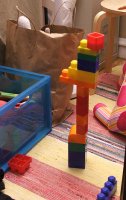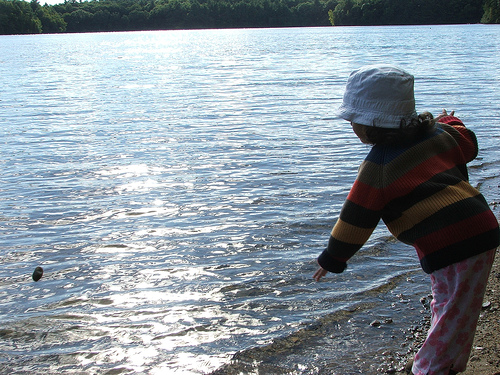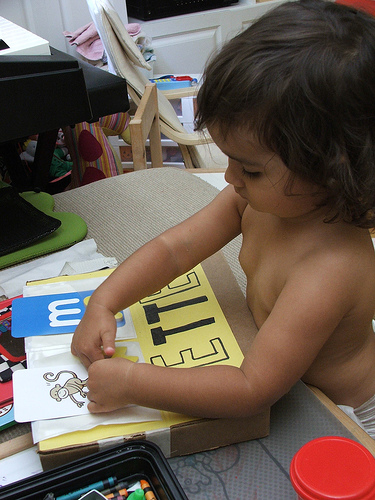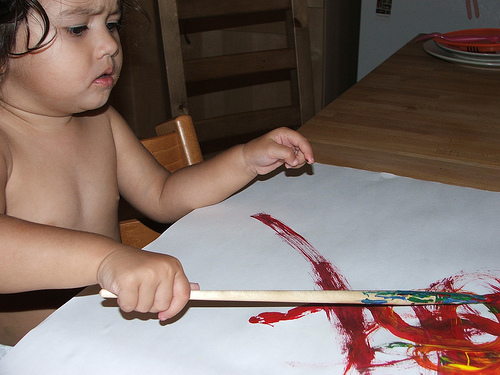Summer has drawn to an end. Fall is suddenly upon us. So, time for a new banner: a suitably melancholy, darker one. I lay the old one – the fresh splash in the pool - to rest here:

Be joyful though you have considered all the facts
Summer has drawn to an end. Fall is suddenly upon us. So, time for a new banner: a suitably melancholy, darker one. I lay the old one – the fresh splash in the pool - to rest here:


Walking around “Walrus Pond” the other day, I had that great feeling of belonging. I haven’t gone there often (this was my third or fourth visit in the ten years that I live here), and perhaps that is why it is each time so special.
I’ve read Thoreau, of course, lots of it. He was the one who gave me a way to feel at home in this country, especially in this part of the country. I used to feel so homesick for the medieval cathedrals and the old Roman antiquity of Europe, but Thoreau gave me a wonderful alternative: nature, wildness. Walden Pond now exemplifies an America where I feel welcome, at home, wholesome.
I noticed that Amie, at the beginning of two, is looking into “belonging” as well. When building towers with her blocks ( a relatively new development: she discovered the blocks box a couple of days ago and spontaneously started building) she will ask, of a block: “Where does it live?”

She knows where she lives: “I live in Boston” or “I live in Brookline library”. And where some of her friends live, “in New York”, “in Washington DC” (all names she can pronounce without a problem), “and that is far away”.
In November we are getting on a plane to travel to exactly the other side of the globe to visit grandparents. I am so curious to see how much she will understand of distance, and family.
She is also working on a different sense of belonging – though I would like to think about just how different they are.
When I was about to drink from DH’s glass – we share a glass during dinner; question of less dishes, and less loading and unloading dishes – she stopped me and said: “No, Mama! That’s Baba’s!” It was a great opportunity for a Spiel about sharing and “thank you” and “you’re welcome”.
She will also hold out a piece of food from her plate to me and say: “You want it, Mama? I’ll share it with you, I’ll give it to you.”
It is a great privilege to witness her forging a sense of place, finding words for home, and physical spaces, trying out different relationships, figuring out which people belong there, with her.
It is my job to make her feel at home and to show her that she can be at home in other places as well: to give her not one particular physical place, but an anchor.
A mobile anchor.Â
This anchor is herself and her nearest family, and a feeling of home that she can take with her wherever we go.
Practically, I’m thinking of a feeling of safety. Routines are a key part of that now that she is a two-year-old with a growing sense of entitlement, expectation and time (it strikes me now that so much of place is really time).  We have sound bedtime and potty routines, we always have breakfast and dinner together, and we each have “jobs” that we do no matter what (Baba drop her off at daycare, she plays and has fun, and I pick her up).
Most of these routines we can take with us, wherever we go.
When (and where) I grew up it wasn’t necessary for parents to take this issue under such conscious consideration. Home and place were unproblematic and often taken for granted. I moved once, as a child, and then only two kilometers from our old house.
But we are not that kind of family. We will always be traveling, if only to see our families scattered across the globe. Our jobs are not as secure as my parents’ jobs were. And who knows how much we’ll be on the move, given what the future will bring…

We were all set for a relaxed weekend, when at 10 in the morning our place was suddenly bombarded by a deafening noise: our upstairs neighbor was having her floors sanded – without warning to us. Well… It was still going on when time Amie’s naptime came around, so we had to flee, and after trying to get her to nap in the stroller – that’s not going to happen anymore! – we got in the car and drove to Walden Pond.
We spent two wonderful hours there. Amie loved it, picking up stones and sand and throwing them into the water, and before I knew it, getting in up to her ankles, shoes and socks and sleeves and all!Â
I stripped us of socks and shoes, rolled up the trouser legs, and we made sand clouds by wiggling our toes, stomping our feet. Threw rocks of course, and stuck twigs into the loose sand. Admired little stone houses built by previous visitors to the small beach. We admired the sunshine on the waves, got dizzy looking at them – Amie kept saying: “I’m going! I’m going now!” – and once or twice nearly fell in. And made waves.
The weather was glorious and the water warm from an entire summer. There were maybe thirty other visitors – a stark contrast to our last visit over a year ago, when we had to fight to find some towel space on the beach.
I picked up Amie and carried her on my hip almost halfway around the pond, telling her about Thoreau – we didn’t make it to the site of his cabin.  She may have understood something of it. It doesn’t matter. She came home and told her Baba: “I went to Walrus Pond!”

Yes, she is wearing her PJs. Baggy, flowery ones.
IÂ felt pretty bad about the car drive. The question of whether a nap was worth it became useless as soon as it was clear that Amie wouldn’t even go to sleep in the car (she didn’t: she was a wild child by the time we got home!). Next time we’re taking more people along, and/or we’re getting there by alternative means.
Soulemama has a wonderful post about the gifts her two older boys made for their baby sister, Adelaide (2). Calvin made a tote-bag, first sewing it by hand, then turning to the machine – he’s a wizz at the machine! – and Ezra made a song, which he played on his brand new fiddle and then “translated” to a pillow.
Calvin, Ezra and Adelaide are homeschooled in the unschooling way. And it shows in these gifts. Not so much in the fact that the boys are sewing (though I am sure traditional schooling and the peer pressure it involves would probably dissuade boys from sewing), but in the fact that they had the time to make these wonderfully original gifts.
Most traditionally schooled kid would not have had the time to think so deeply about their gift and to execute it. They would have been forced, by lack of time, to spend some of their piggy bank money on a store-bought gift.
That is, if they give their siblings a gift at all. That’s the other about homeschooling siblings: they spend so much more time together than traditionally schooled siblings do, get to know and appreciate one another, and learn to get along,  so much better.
This is homeschooling in a sibling context, of course. Amie is an only child, so though homeschooling, at least part-time, appeals to me, I still worry about the lack of community. It would be just me and her, and hopefully (sometime soon) some grandparents – are you listening?
I know, there is community out there! Other homeschooled kids who get together in play-school-groups. And if I am thinking part-time homeschooling, then Amie would still be exposed to school groups…
It’s my shortcoming, which I have to overcome: I’m not very social. But if I want to give homeschooling a chance, I need to find that community…

I probably shouldn’t have watched “Dimming the Sun” on NOVA/PBS yesterday. Did you see it?  I stumbled upon the last half hour of the program by accident and by the time it was over, all the old feelings of hopelessness, helplessness and inadequacy made their comeback. And of course, whenever they do that, they are worse than before, because I was yet again lulled into a false sense of security, yet again complacent.
When I went to bed, there was my Amie, sleeping so soundly and sweetly, with not a care in the world. I lay down next to her and wept, whispering empty”sorries”. I couldn’t bring myself to saying: “I’ll make it all better.”
So what was the program about?
It turns out that, since the seventies and eighties, when air polution in Europe and Northern America went virtually unchecked, said air polution has been “dimming” the sun, that is, reflecting the sunlight back, in effect cooling the earth . Another contributor to this are contrails: the vapor trails left behind by high-flying aircraft.
This has veiled the actual degree of global warming, which, if we take the dimming into account, now seems much more advanced than we thought. Since the 1990s, Europe and Northern America have been cutting down on polution, which sounds like a good thing, for health reasons, obviously, but it is a double-edged sword: it opens the door to more global warming. And, as James Hansen put it:
In a way, it is unfortunate that the small particles were in the atmosphere because we would have realized much earlier that the…how strong the greenhouse effect is, and would have had more time to make the adjustments that are going to be necessary to slow down and eventually stop the growth of greenhouse gases.
The most gripping example of this dimming for me was the footage of the great draught and famine in the Sahel: Ethiopia, 1984.
For decades, the seasonal monsoons, which had kept the Sahel going – hanging on by its fingernails – stayed away. No one know why, but it now seems that it was due to that same polution by Europe and Northern America - which satellite pictures revealed reached deeply into the Sahel. These particles blocked the sun’s yearly warm-up of the oceans north of the equator. This in turn blocked the ocean from drawing the tropical rainbelt around the equator up north for a while. That meant that the land at that longitude was no longer getting its much needed monsoon.
The images of all those starving and dead children… They gripped us in the 80’s, and we all contributed to Aid. But I wonder: had we known, had it been pointed out to us, that it was we who were directly repsonsible for this, would we have changed our lifestyles?
The Sahel was an example of the consequences of dimming the sun in the past. The program of course also looked into the future. Today’s climate models predict a maximum warming of 5 degrees Celsius by the end of the century, but this young climate scientist, Peter Cox, thinks it could very well rise by as much as 10 degrees Celsius, or 18 degrees Fahrenheit.
Within a matter of years, many plants would die. Also the trees. The soil would simply blow away… Just writing this down makes my head feel top-heavy! If you missed the show, see if they will rerun it in your region, or read the transcript: even without the images, it brings the message home.
The program ended with children – because they’re the future, you know. The climatologist, Peter Cox, was shown playing on a beach with his young son. But it wasn’t sentimental tear-jerking. When Cox took the last word, it sounded like an understatement (and this from the most pessimistic of global-warming scientists, and the father of a child who will live to see his predications come true):
One of the real driving forces is that you leave an environment that is comfortable for your children. And if we carry on going the way we’re going, we’re not going to do that. We’re going to leave an environment that’s much worse than the environment we lived in, and it will be down to what we did when we were using that environment, and that would be, tragic, really, if that happened.
It already is tragic, in my eyes. As you know, I am one of the pessimists about what will change – Hansen says we have a decade before we reach the point of no return.
That’s why I say “sorry” to Amie, but not “I’ll make it all better”. I’ll do my best, and every little bit counts, makes it a little bit better, I know, but in the end, I often despair whether it will be enough.
I don’t want to promise what I can’t deliver.

A couple of months ago, Amie started showing interest in letters. It was rather unavoidable, as we have wooden alphabet puzzles and alphabet fridge magnets. And she sees us reading, of course, and writing on paper (Mama) and on the computer (Baba and Mama).
She now also pretends to read her books,  some of which she knows by heart. It freaks out visitors, because she really seems to be reading fluently! She can recognize her written name and the A, B, C, K, M, O, P, S (and perhaps X).
She also pretends to write. On those occasions it sometimes seems that she hasn’t quite grasped the difference between the name of a thing and the thing. She will say:
– “This is a dinosaur!” and will make big movements, while very slowly spelling out the word – “di-no-sau-ah!” (with a flourish at the end). I ask her:
– “Did you draw a drawing of a dinosaur or write the word ‘dinosaur’?” (we have always taken care to make those distinctions between pictures, drawings, or name(s) of something, and the something). She answers:
– “It’s a drawing of a dinosaur!” (tone: are you stupid or what?)
In any case, a fun game I invented is the Letter Box. It’s your average small cardboard box that has an easy-to-open flap. On it I stuck two cd-sleeves.
That doesn’t mean we’re learning how to read, let alone actually reading. I have been doing some research on all the elements that need to come together and all the effort that needs to be expended for reading to happen… and I must admit, I am intimidated!
I don’t want to leave reading up to school, though. First of all, because that kind of school is still very far off, and I think Amie might be interested before then. I also want her to learn reading in her own setting, that is, at home, as part of play, and out of her own volition.
Teaching has always been a large part of our parenting - of anyone’s parenting, for sure, but DH and I are very conscious of our roles as teachers. And Amie is a curious girl. She can now count to ten, for instance, not just say the words, but count 10 things: we taught her that and she eagerly aborbed it.
I wonder what kind of shape our teaching her / her learning how to read:
One thing is for certain, we can’t wait for our daughter to experience the joy of reading, but we’ll take it one step at a time, letting her lead the dance.

As you can see, Amie has been painting – you can also see her in action in my previous post.  And as promised, here is some of her artwork (my favorites):
I apologize for the terrible photographs. I’ve been waiting for a clear day to take pictures of them without a flash (they’re on large format, so I can’t scan them in), but the weather has been gray so down here in the basement it’s been even grayer.

This is a picture of my little girl, who just turned two. She loves to paint now. To draw, not so much anymore. Even coloring has taken backstage. See the concentration on her face? Painting is “serious” work.
I will post some of her paintings soon. They are piling up (and we’re talking large sheets too), and each and every one is a work of art.

I got weed juice seemingly permanently rubbed into my fingers, dirt under my fingernails, my first case of “hoe-neck,” scratches all over my arm from the squash plants, a little back ache, a mild sunburn… When I proudly mentioned this litany to my friend, she said:
– “Honey! You’re a gardener now.”
I raised my hand to stop her and said, as seriously as I’ve ever said anything in my life:
– “Correction: I’m a farmer now.”
Then we laughed, of course.
I’m not a farmer yet, by a long shot (or even a gardener), but I have made a beginning. Volunteering at a farm – offering physical labor for experience – was a longstanding plan of mine, and after some paperwork and a couple of interviews, it finally came together. I am now an agricultural volunteer at Drumlin Farm in lovely Lincoln, Massachusetts! In fact, I have been so for over a month, though I’ve only been able to spend about 15 hours.
On the forms and during the interviews, I was repeatedly asked what I could contribute to the farm. I was always honest: nothing but the strength of my body. I made it clear that I have no special skills, no experience, no expertise, and very little book knowledge.Â
But, I said, I have these great tools: my hands. And enthusiasm, curiosity and no problem with hard physical labor.
That was, apparently, sufficient. And it was great, showing up on the first day and having nothing expected of me other than hard work.
I saved the cosmos (flower), from the purslane (and lamented the fate of said purslane, as it is chock-full of omega-3s and we just threw it on the compost pile) , I weeded and hoed the carrot, cauliflower, brussels sprouts, broccoli and squash fields. I also trellissed tomatoes. The work is simple, hard, hot and repetitive, and I don’t mind it at all.
It’s also lonely, as I come at times when most workers have left for the farmstand at the Farmer’s Market. One of the apprentices apologized for leaving me alone in the fields, with no one to talk to, and another suggested I come on Sundays, when the members of their CSA come in and there are more people and opportunities to chat.
But I like the loneliness of it, the intense concentration on the plants, and once in a while standing up and being surprised by how suddenly the sky changed.
To be honest I haven’t learned much by way of “farm facts”, not much of the whys and wherefors of decisions and actions. I just do what the crop’s manager asks. I should be more assertive in asking questions, which the apprentices and crop’s manager would gladly answer. I’ll slowly start doing that, as more opportunities arise. For now, I’m just there, in the moment.
I have gained experience, most importantly of my feeling of responsibility for the crops. I get to take some at the end of the day, so the carrot I save from the weed may be mine to take home in a week or two. But I am also repsonsible in a more general way. That is what I am there to do: to relearn the skills of growing food, which I have come to think of as a responsibility we all have.
I’m taking it easy. I want to feel at home on the farm first, before I start learning for serious.
 Â Â Â Â Â Â Â Â Â Â
          
It’s the end of One Local Summer, the 10-week Eat local challenge put out there by Liz at Pocket Farm and answered by many. I am thinking of taking the September 2007 Eat Local Challenge too. I hould hurry: it’s September already!
Our last OLS meal was spaghetti bolognese, with only the organic, whole wheat pasta and the salt and pepper non-local. All the other ingredients were from the Farmer’s Market or Drumlin Farm, none of which are more than 100 miles away (tomatoes, red and green bell peppers, carrots, onions, garlic – lots! – squash, ground beef) and my herb garden at 0 miles (rosemary, thyme, oregano).
No photographs, though! It was a big pot, but we had friends over for dinner and then we enjoyed it for another lunch and dinner, and then, then it was all gone! And I had forgotten to snap a picture…
I want to mention one very special thing, though, about this pasta sauce: Amie ate it! Granted, she ate the beefy chunks, but she didn’t mind (so much) a piece of carrot or pepper sticking to it. Must make it again, even more of it, and freeze it.
Almost as soon as we took it on, the OLS challenge changed our entire week’s food habits, not just for the one agreed upon meal.
Yesterday at dinner at a friends’ place, we had avocado in our salads. It was such an intense, exceptional experience. As I voiced this to our hosts, I realized that since we took the OLS challenge, we haven’t had any of the impossible-to-be-local fare that we used to eat: avocado, banana, kiwi, oranges…Â And we hadn’t missed them!
I think we could keep on doing this for September, and I want to make a go of it into October, but I’m afraid we won’t be able to keep it up much longer after that. Living in a small space, with a little top-of-the-fridge freezer, I wasn’t able to preserve or freeze any of the local summer food.
I’m curious to see when the turning point comes, who will notice first…